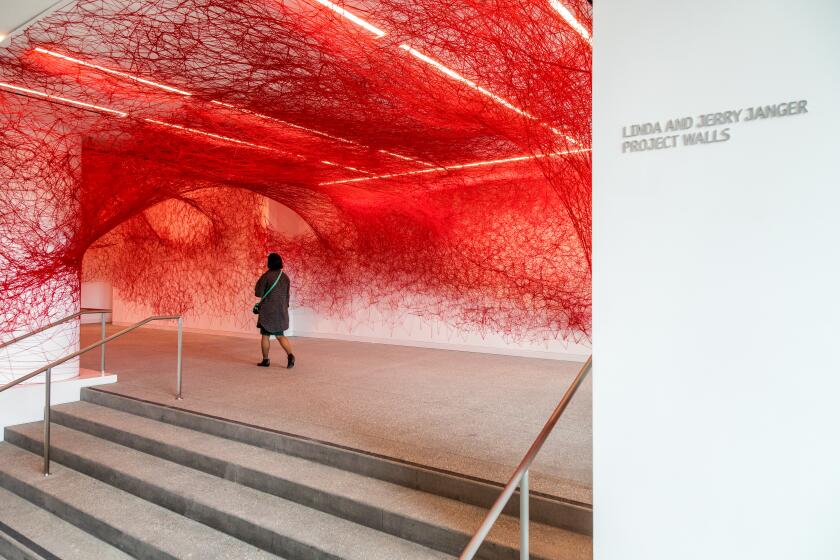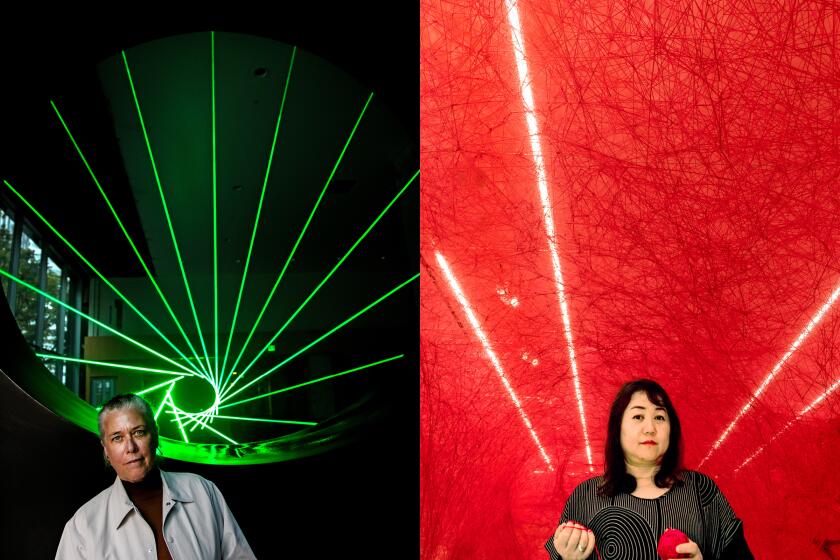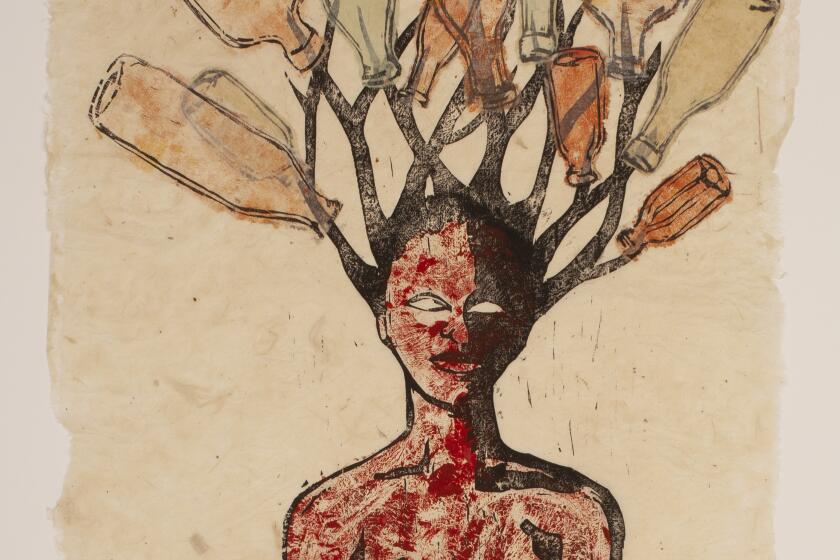Review: The Hammer Museum unveils its impressive contemporary collection. But where will they put it?
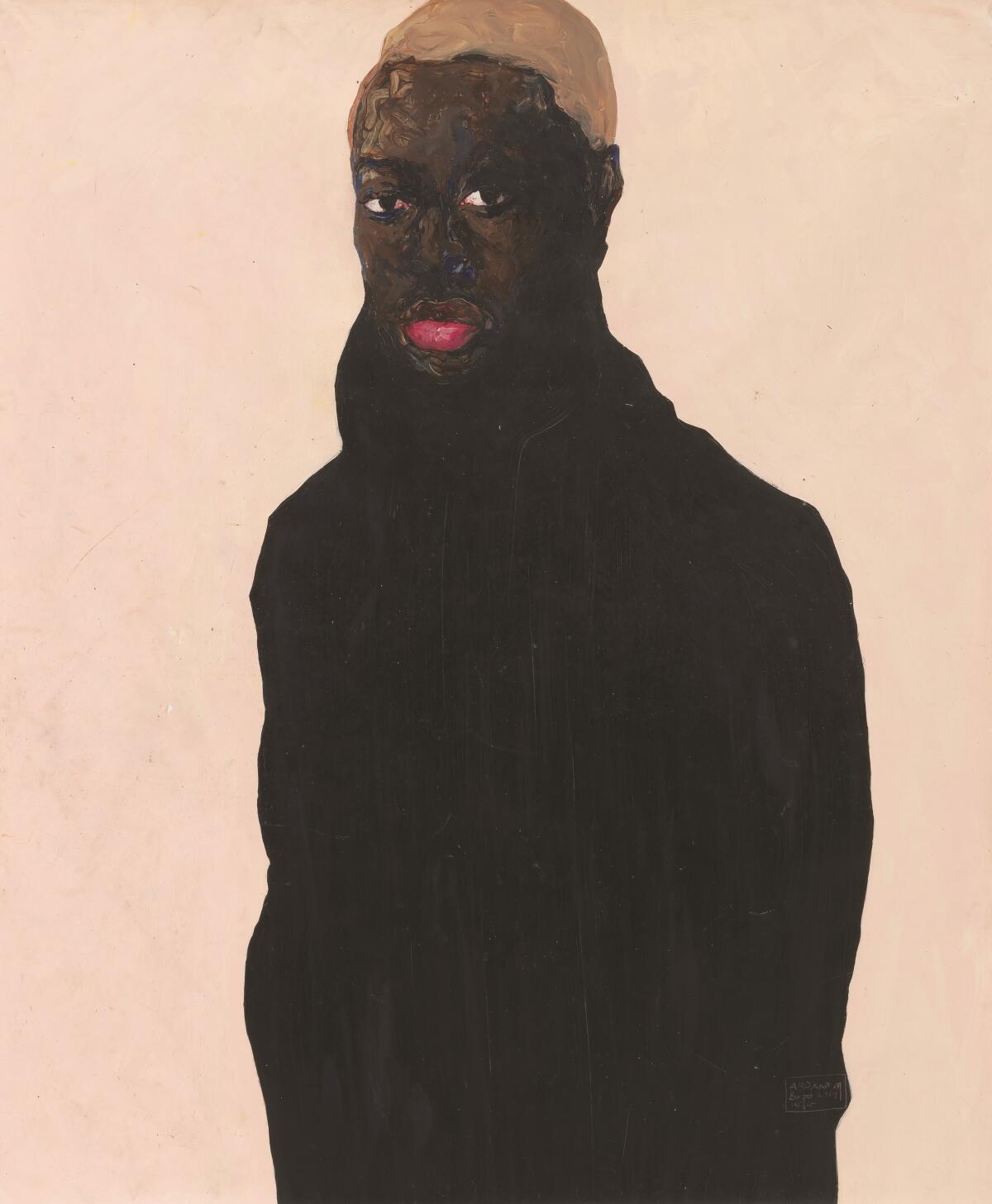
Over the last two decades, the UCLA Hammer Museum has dramatically transitioned from a vanity-fueled embarrassment to a vibrant cultural institution. The leap is large. Today it is one of our liveliest art museums — not just in the city, but in the nation.
As befits its affiliation with a great public university, the exhibitions and programs are framed as forums for art’s inherent representation of — and active attention to — important societal facts and issues, both cultural and political. Social justice, in form as well as subject matter, has been a continuous story line. Art made by women, BIPOC and LGBTQ artists has been prominent, although not to the exclusion of traditionally acknowledged work by straight white men.
In short, the Hammer is the Woke Museum. Commendably so. No art museum occupies a pinnacle if it is not enthusiastically admired by artists young and old, and this one is.
To unveil its latest, and perhaps most dramatic, architectural renovation and expansion, the Hammer has now launched a fleet of small exhibitions and single-artist shows, as well as one biggie. “Together in Time: Selections From the Hammer Contemporary Collection,” assembled by director Ann Philbin, chief curator Connie Butler and four members of the curatorial staff, pulls together 73 paintings, sculptures, videos and mixed-media works. All were acquired since 2005, when the museum decided to add contemporary art to its small and uneven trove of European and American works by Rembrandt, John Singer Sargent, Vincent van Gogh and other blue-chip historical artists.
Indeed, the idea of beginning to form a contemporary collection is tied to the updated and expanded building.
An inadequate 1990 structure hastily thrown together in his dying days by the museum’s namesake, the late industrialist Armand Hammer, required major fixes. Hammer, who peevishly overturned decades’ worth of pledges to donate his corporate-minded art collection to the Los Angeles County Museum of Art, where he was a trustee, envisioned a modernized Renaissance villa with upstairs galleries built around a courtyard, suitable for his self-perception as a corporate Medici.
Ugly barely began to describe it. Inhospitable — to art and to audiences — did.
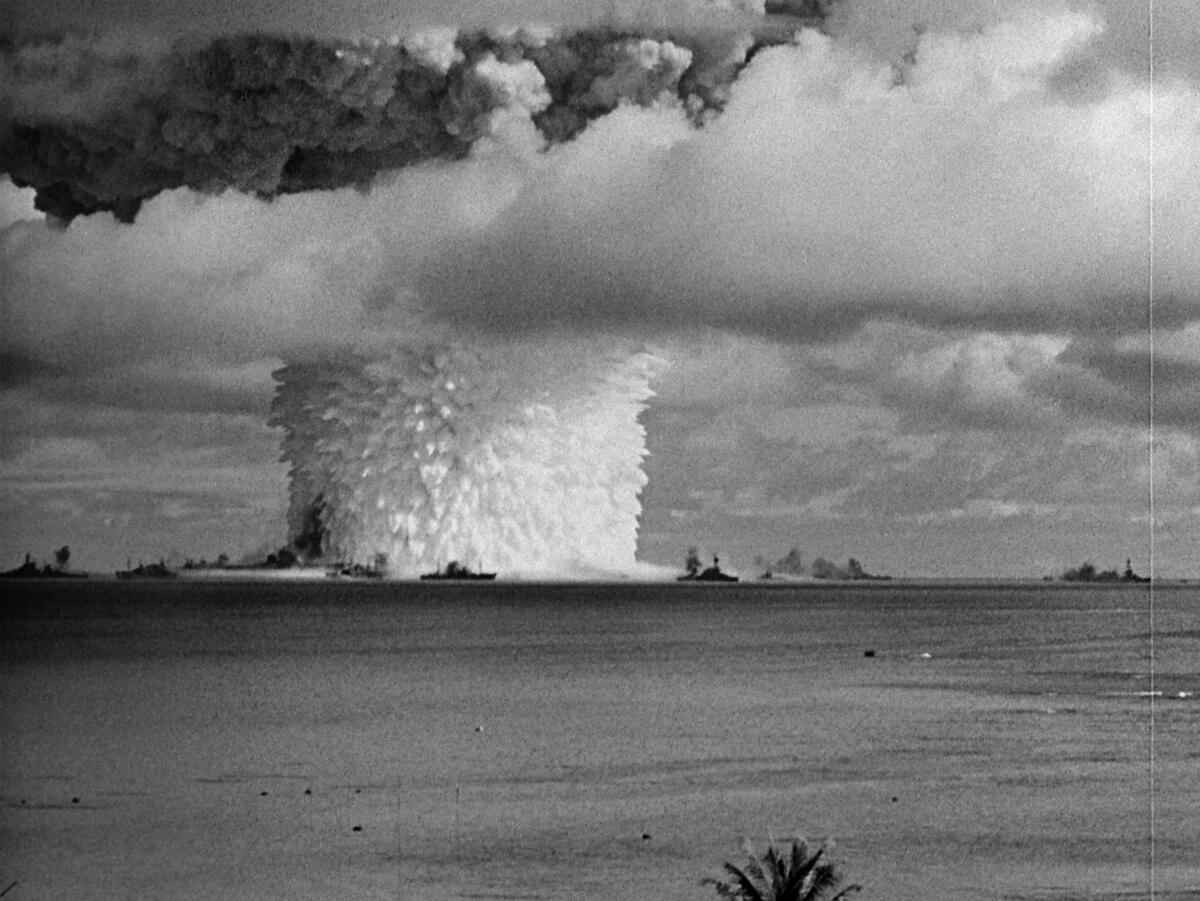
The horizontally striped black-and-white marble façade is part Postmodern architectural pastiche of buildings like the art-filled Duomo in Siena, Italy, and part simplistic foil to the vertically striped panels of white marble and dark windows of the former Occidental Petroleum headquarters to which the museum is awkwardly attached. (Those elements, of course, remain.) The original Hammer, in a weird augury of the recently unveiled Orange County Museum of Art’s new facility, opened to the public before the building was finished. Architecturally, it has been playing catch-up ever since.
Philbin’s arrival in 1999 led to development of a master plan by architect Michael Maltzan two years later. It has been implemented in modest steps — the addition of a handsome theater here, an elegantly helpful bridge spanning the courtyard there, new administrative offices in the adjacent Occidental tower acquired by UCLA, study-storage for the remarkable (and hitherto underutilized) Grunwald Center for the Graphic Arts, an attractive shop and restaurant (of course) and more. Now, a capacious new entry at the highly trafficked corner of Wilshire and Westwood boulevards, one of the nation’s busiest automotive intersections, awaits the eventual opening of a subway stop across the street, planned for an unspecified date before the 2028 Olympics.
The Hammer Museum revamp, which opens March 26, features new entrances, more gallery space, immersive installations, a sculpture terrace and more.
A redesigned and welcoming lobby and a former bank office transformed into a gallery are also among the changes, currently housing commissioned immersive installations from Chiharu Shiota and Rita McBride. On the patio adjacent, a monumental Sanford Biggers bronze sculpture of a Zeus-like figure melds African and American forms.
There’s a bit more to go, including construction of a path between that lobby and the bank-gallery, in what might be a final construction phase. The contemporary collection, however, is the primary reveal. It’s a generally impressive array, shrewdly installed.
One disconcerting sample: Around the corner from a 17-panel Ben Sakoguchi painting is Bruce Conner’s half-hour film “Crossroads,” a slow-motion montage of government footage of 1950s nuclear test explosions in the Pacific. A shiver goes down your spine when the grainy film’s fuzzy fog of contaminated smoke and water envelops a naval ship, all to a haunting synthesizer score by Terry Riley and Patrick Gleeson.
The stark counterpoint is Sakoguchi’s “Towers,” a series of clear-eyed landscape views of and from the concentration camp watchtowers built between Arkansas and California to imprison American citizens of Japanese descent during World War II. They surround a group picture of inmates at Poston, Ariz., the prison where the artist spent part of his childhood, the discomfiting faces echoing a benign high school graduation picture.
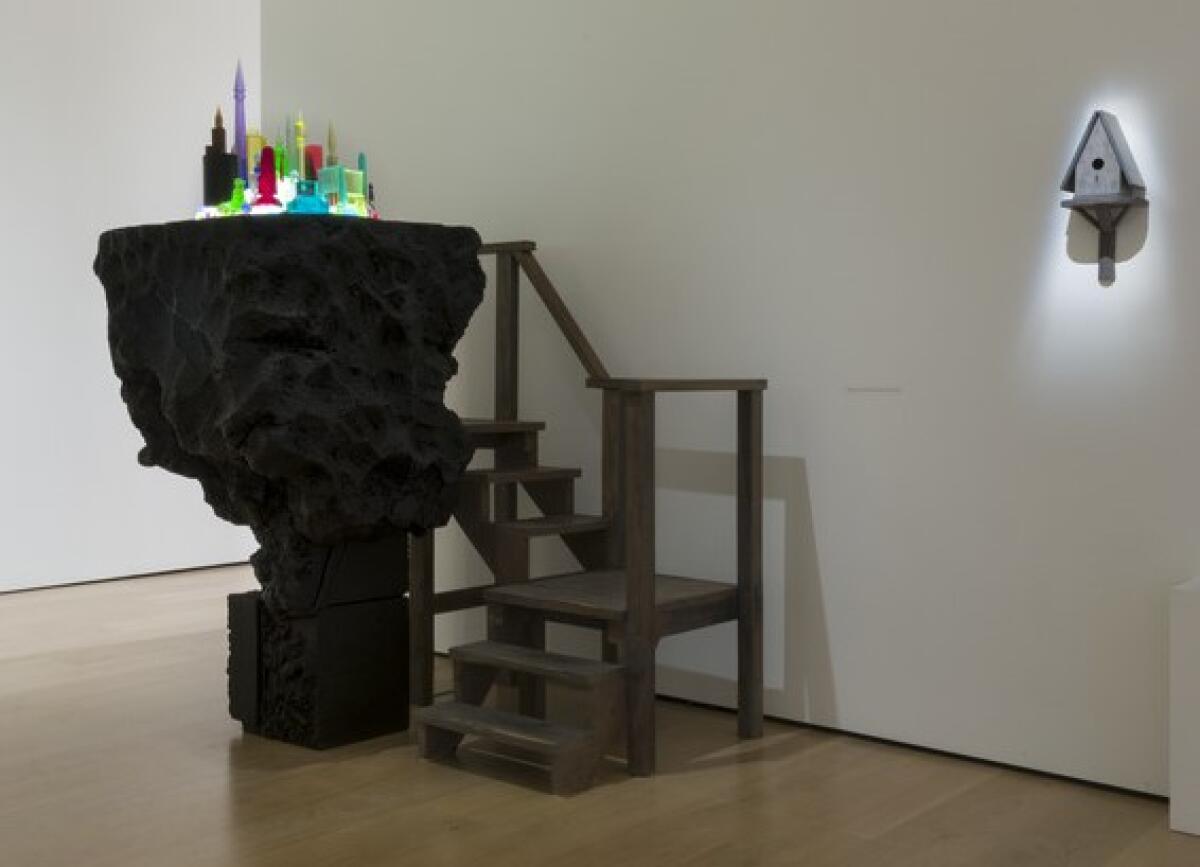
Most works have not been seen since the museum acquired them, either through purchase or gift, although some have been featured in earlier Hammer exhibitions. Among the latter is Mike Kelley’s 2010 “City 000,” a heart-tugging juxtaposition of a glistening model of Kandor, lost mythic birthplace of alien Superman constructed here atop a craggy mountain, and a tiny birdhouse spotlighted on the adjacent wall. The “shining city on a hill” and its neighboring domestic habitat are reached by climbing a gallows stairway.
These works reflect a bedrock principle for building any art museum collection. If an artist is good enough to be presented in an exhibition, especially a solo show, then institutional commitment should also take the next step: a permanent collection acquisition for posterity.
The Hammer Museum is debuting large-scale immersive installations in its lobby and new gallery by artists Chiharu Shiota and Rita McBride to mark the completion of its new building project.
“Together in Time” is therefore a partial record of the Hammer’s admirably woke past program, which catapulted a once dreary place into the forefront of American university museums. (“Superfluous, even silly” is how I described the preschool vanity museum when it first opened, its original $96-million price tag roughly the same as what the renovations have now cost.) Memory lane meets the explicit gender and ethnic diversity demanded of museums today, an indication of the Hammer’s long-standing commitments.
Among notable works recalling past shows are Llyn Foulkes’ grim mixed-media painting of a blood-soaked U.S. military officer with a mysterious envelope lashed to his forehead; Jimmie Durham’s wood sculpture fusing a Native American totem with a Christian cross; an early painting of alien life forms by Eva Hesse, who would soon gain renown as a sculptor; Christina Quarles’ torqued abstraction of a reclining nude; and a portrait of a young man in the pattern-bedecked guise of Aztec fertility goddess Chalchiuhtlicue, painted on a slab of handmade adobe by rafa esparza. There are many more.
The earliest object is an exquisite 1951 painting by the late Lee Mullican, once a UCLA professor, its knife-edge rays of shimmery golden light emerging from a central core to summon the birth of new worlds in the era’s backwash of hydrogen bombs and Holocaust. Among the more recent is the imposing 2019 portrait “Hudson Burk 1” by Ghanaian artist Amoako Boafo, with a silhouetted torso and finger-painted face a legacy of Modern artists from Egon Schiele to Barkley L. Hendricks.
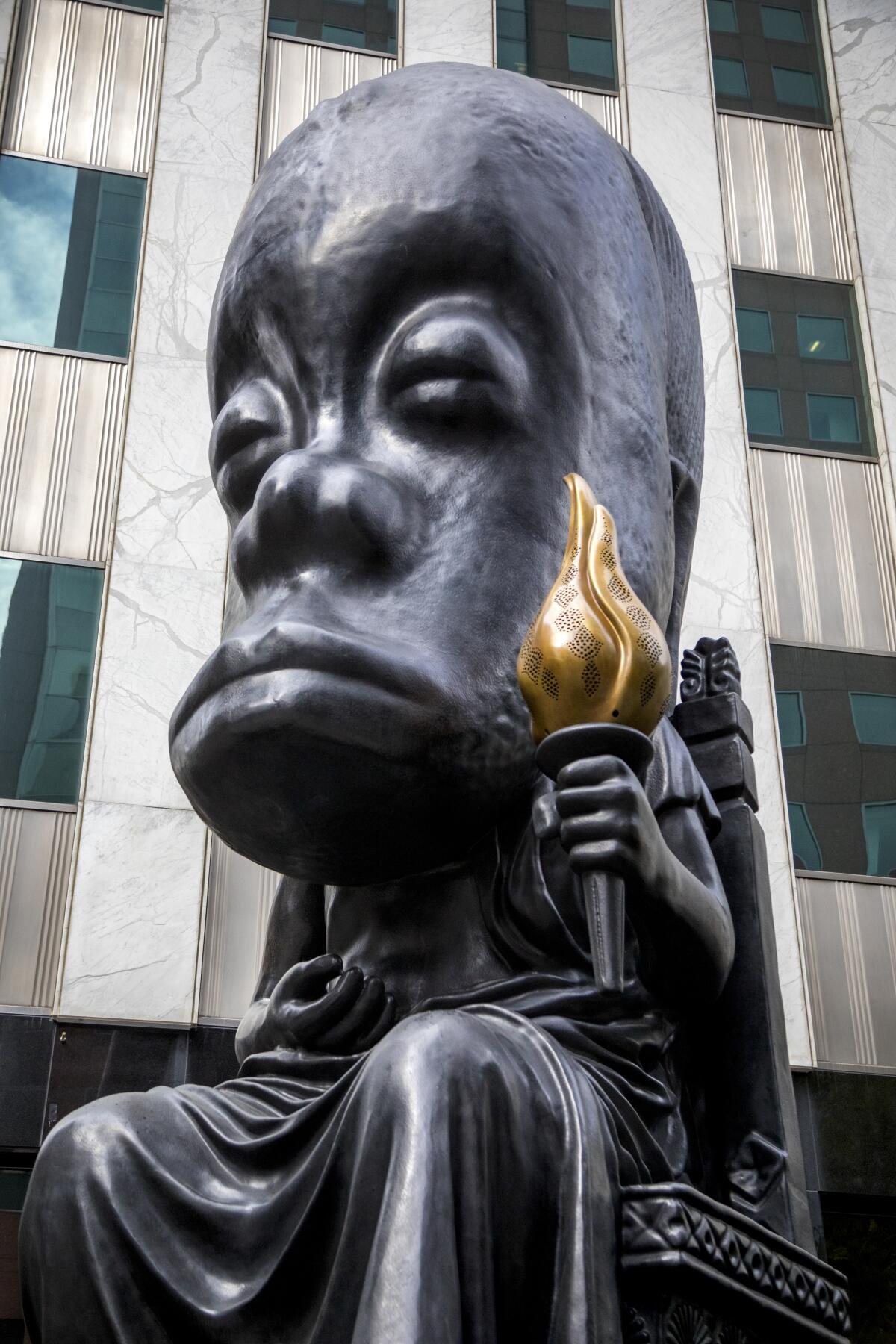
One result of the close relationship between the Hammer’s permanent collection and its program is that almost two-thirds of what’s on view dates from the 21st century. It’s very much a “new millennium” collection. The second largest contingent — 11 works — is from the 1970s, most by L.A. artists and made in the immediate aftermath of the city’s first efflorescence as a significant center for new art production.
The institution’s new Grunwald Center and an adjacent gallery opening this weekend seek to answer a pressing question: how to reconcile a museum’s basic preservation function with an equally important obligation for public accessibility?
Chris Burden’s drawing is an annotation of a New York Times review of his performance art, including having himself shot in the arm, offering a witty correction of various factual errors plus a lone pat on the back for one insight. Eleanor Antin, invited to contribute Conceptual work to a publication if she would agree to pay $8 per page, lists what else she could buy for the reproduction fee: two hours of housecleaning, cab fare for trips to her kid’s school or a month’s worth of marijuana. (Decisions, decisions.) Allen Ruppersberg collected dozens of patron receipts from the short-lived diner he opened near MacArthur Park in 1969, where small assemblage sculptures were on the menu.
All three works put art’s social dimensions front and center, as does Roland Reiss’ room-size “The Castle of Perseverance.” The sofa, side tables, lamps and other furnishings of an ordinary domestic living room, built from soulless sheets of brown particle board as an inert Minimalist still life, speaks eloquently of contradictions within the pop-heavy experience of L.A. — the first great suburban metropolis.
The “Together in Time” title derives from a piece by Mexican artist Mario García Torres, included in a rotating presentation of the collection’s video art. Yet the show’s primary stumble is its somewhat slight representation of Latino artists. The relatively few examples might expand when the show changes in June. (In a gallery currently housing a recent acquisition of Chinese camera work, “Ecstatic” will add collection drawings and sculptures.) For a city with a near majority Latino population — and a powerful history — more is needed.
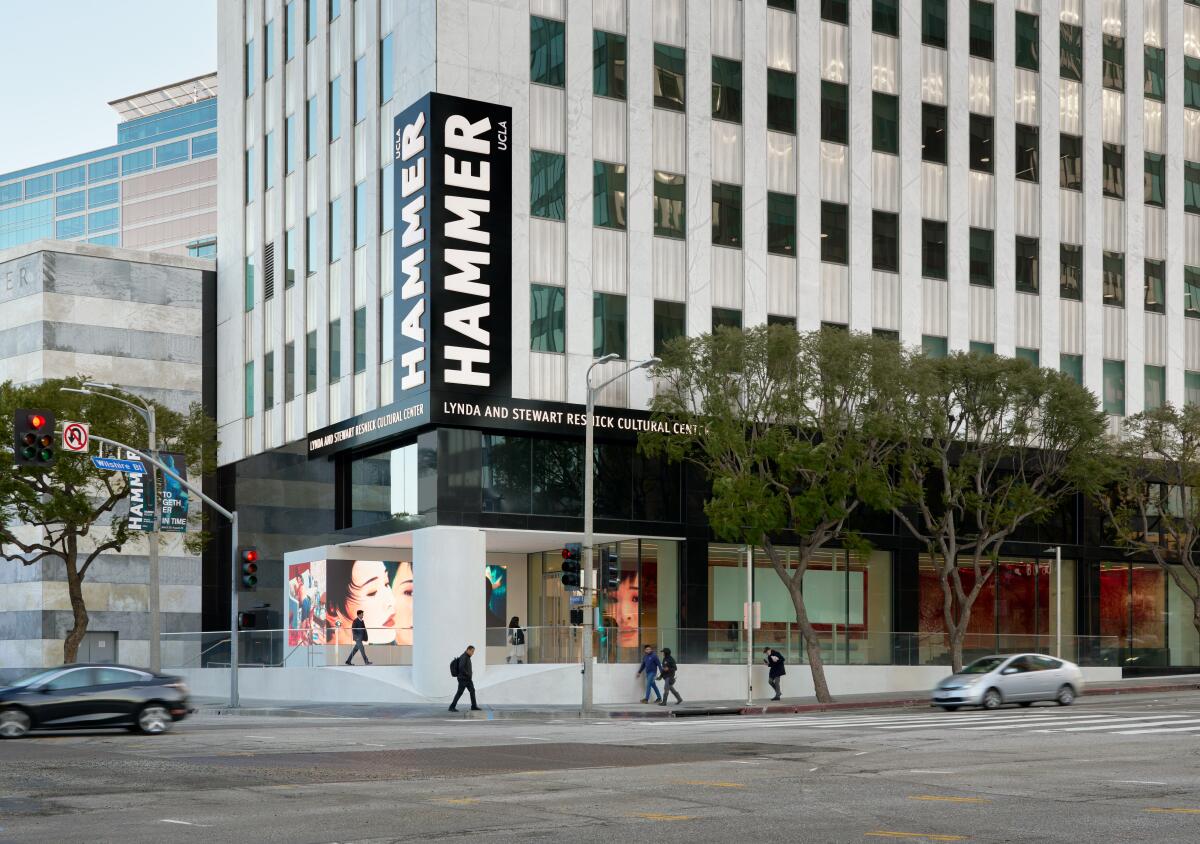
Which brings us to a larger paradox. The current shows, enlarging on small samplers in years past, represent just the tip of what is now a roughly 4,000-piece Hammer iceberg. The collection will continue to grow. Gallery space has expanded from just 16,600 square feet in 1990 to 26,600 square feet today, but none is dedicated to permanent display of those contemporary holdings. Even more is needed, but there’s no place to build it.
Having adequate permanent galleries for permanent collections seems to be an elusive dream for visitors to L.A. art museums. Downtown, the Museum of Contemporary Art’s stellar collection outgrew its space long ago. In mid-Wilshire, LACMA may be the only museum in recorded history to tear down existing permanent collection galleries to replace them with less space, not more. In August, the Hammer’s temporary contemporary collection goes back into deep storage. “Together in Time” looks great, but you’ll need to get there in time to see it.
'Together in Time'
Where: UCLA Hammer Museum, 10899 Wilshire Blvd., Westwood
When: Through Aug. 20. 11 a.m.-6 p.m. Tuesdays-Sundays; closed Mondays
Admission: free
Info: hammer.ucla.edu, (310) 443-7000
More to Read
The biggest entertainment stories
Get our big stories about Hollywood, film, television, music, arts, culture and more right in your inbox as soon as they publish.
You may occasionally receive promotional content from the Los Angeles Times.
